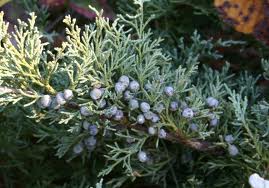Welcome back to Part III of Edible Plants. As always I want to let you know that these plants should only be ate if you are in an emergency situation and they should be ate in small quantites. Some of the plants if ate in large quantities can make you sick, so be careful and use good judgement. Alright so this is part III and we have covered quit a bit of different plants that you can eat, some you probably already new about such as blackberries, coconuts, blueberries, but we have also covered quit a bit of ones you probably have never heard of or even seen before. I know there have been a bunch I never even heard of in my whole life. Well lets dive right in and learn some new plants that are edible. 
- Elderberries: Shrub w/ dark blue-purple fruit. Elderberries grow up to 18 feet tall and they have multiple stems. They have tiny white flowers and they grow in the open in wetlands along lakes and rivers. The flowers and fruits that grow on it are edible raw: but make sure to avoid small red fruits they may be toxic, also the other parts of the shrub are poisonous as well.

- Fireweed: Flowering plant two to five feet high. Fireweed produces showy, large pink flowers and lance like leaves. They only grow in cold regions, especially near seashores. You can eat the leaves and stems and flowers raw. You will want to cut the old stems and eat the pith.

- Fishtail Palm: Large tree, with irregular toothed leaves. The flower shoots only grow at the tree top. The fishtail palm grows in the tropics of south asia. The flowering shoot also known as “palm cabbage” is edible along with the pith/juice from the plant can be ate/drank. You can either eat the palm cabbage raw or you can cook it for a warm meal.

- Grapes: A variety of vines bearing fruit in clusters. Now we all know and love grapes but here is a quick break down. The vines are straggly and produce coursely toothed leaves. Wild grapes can grow anywhere in the world except in high altitudes. You can eat the fruit and young leaves either raw or cooked.

- Hazelnuts: Nut-bearing bush. Here is another plant that we are all familiar with. Hazelnuts have large bushes or trees with oval or heart-shaped leaves. Nuts grow in bristly, leafy, or hairy husks. They are mostly found in temperate zones of American West Coast, in Europe, and East Asia. Eat raw or dried. They are rich in oil which makes them great for survival situations.

- Iceland Moss: Stumpy moss. The plant is a few inches high. The color can range from gray to white or red. It only grows in the arctic. All parts of the plant are edible. The best way to eat Iceland moss is to boil it to remove the bitterness. You can also dry it out and it will last a long time without spoiling.

- Juniper: Tree with tiny, scaly leaves. The plant bears blue, berry-like cones that are covered with a whitish wax. Junipers are recognized by crushing the berries or sap to release the fragrant aroma of gin. They grow in temperate zones of Northern Hemisphere, plus the mountains of Africa. The berries are edible and you can eat them raw, and you can take the twigs and boil them into a wonderfully aromatic tea.

- Lamb’s Quarters: Annual, flowering weed. Has dull green oval or spear-shaped leaves with mealy undersides and greenish flower spikes at the end of two to four foot long stems. The plant is distributed throughout temperate zones of Northern Hemisphere. The leaves and stems are edible.

- Lotus (Water Lily): Flowering water plant. The leaves and flowers float on the surface of still water. The leaves can grow up to four feet long and the flowers are a beautiful yellow or pink. The fruit is flat and seedy. The yellow flower varieties grow in North American temperate zones. The pink variety grows in East Asia. All parts are edible. Pull up/dig up stems for baking or boiling.
Thanks for reading Part III of edible plants, i hope you learned something new today. Remember that only eat this plants if you are in an emergency situations. Some of these can be toxic if ate in large quantities so be careful. Use you better judgement when eating this plants, like eat as much of the hazelnuts if you want unless you are allergic then do not touch them. If you do refer to my first aid tips post. Remember to leave comments or questions below and also don’t forget to click on the follow button so you don’t miss out on any new posts. Thank you.